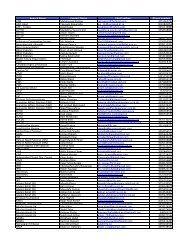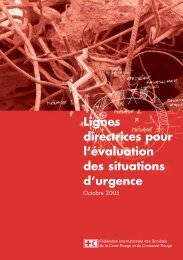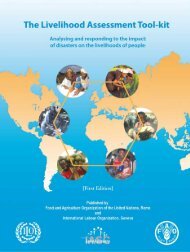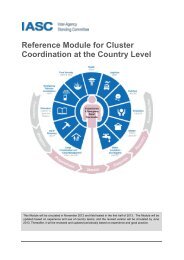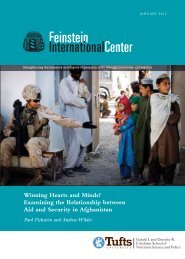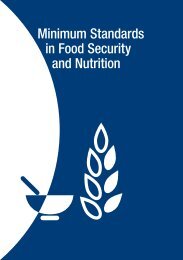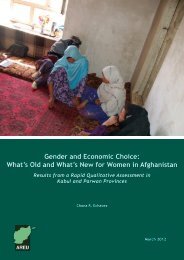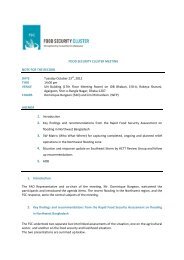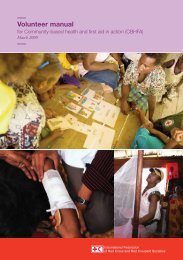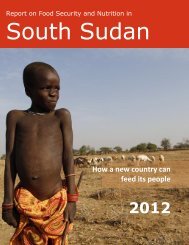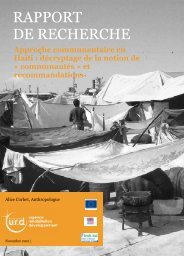NBeG Village Assessment (956.82 KB) - Food Security Clusters
NBeG Village Assessment (956.82 KB) - Food Security Clusters
NBeG Village Assessment (956.82 KB) - Food Security Clusters
You also want an ePaper? Increase the reach of your titles
YUMPU automatically turns print PDFs into web optimized ePapers that Google loves.
The <strong>Village</strong> <strong>Assessment</strong> Survey (VAS) has been used by IOM since 2007 and is a comprehensive<br />
data source for South Sudan that provides granular data from 30 priority counties with the aim of<br />
informing reintegration assistance around basic services and infrastructure, livelihoods, land and<br />
shelter, WASH, education, health, and protection.<br />
The most recent VAS represents IOM’s largest effort to date and after consultations with the<br />
Government of South Sudan Relief and Rehabilitation Commission (RRC), UN agencies, and<br />
state-level partners, 30 priority counties were identified for the assessment. These comprise of<br />
871 bomas, 197 payams, 468 health facilities, and 1,277 primary schools. There was a particular<br />
emphasis on assessing payams outside state capitals, where comparatively fewer comprehensive<br />
assessments have been carried out. IOM conducted the VAS in priority counties that represent an<br />
estimated 72% of the returnee population.<br />
Methodology<br />
The data presented are the results of four integrated questionnaires. At the boma level, a Boma<br />
Questionnaire gathered data in relation to basic services and socioeconomic conditions from boma<br />
committees, composed of the boma chief, as well as representatives of the youth, women, and<br />
returnees.<br />
In bomas where the Boma Questionnaire was being administered, separate Health and Education<br />
Technical Questionnaires were also distributed to healthcare workers and education administrators<br />
in order to capture specific data on the level of capacity and structure of public services provided<br />
to the boma.<br />
At the payam level, a Payam Authority Questionnaire was distributed to senior payam officials for an<br />
additional source of data and for comparison with the boma level responses. All of these research<br />
instruments supply triangulated sources of information, as they are independent verifications of<br />
information collected at the boma and payam level.<br />
Selection Process and Data Analysis<br />
State capitals were excluded from the assessment due to the fact that these had already been<br />
the subject of previous studies. Likewise, payams within state capitals were not surveyed while<br />
those outside the capital were included. In consultation with the RRC, UN agencies, and state-level<br />
partners, counties not previously considered were identified for the assessment.<br />
Guide to Booklets<br />
As a guide to reading the tables, please note that entries with a dash (-) indicate an absence of data<br />
while entries with a zero (0) indicate a total of zero responses.



